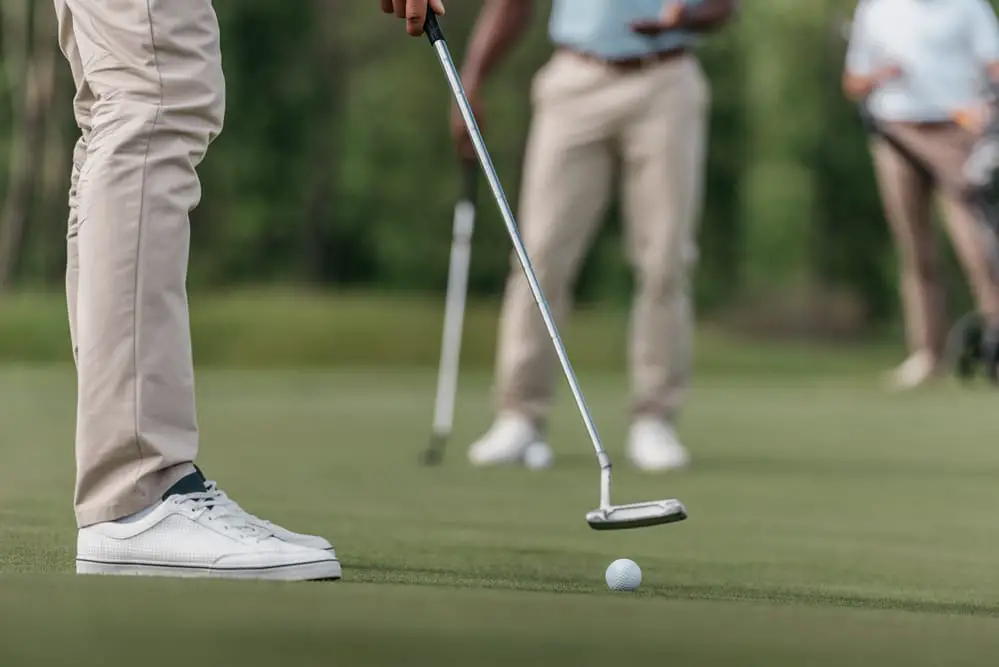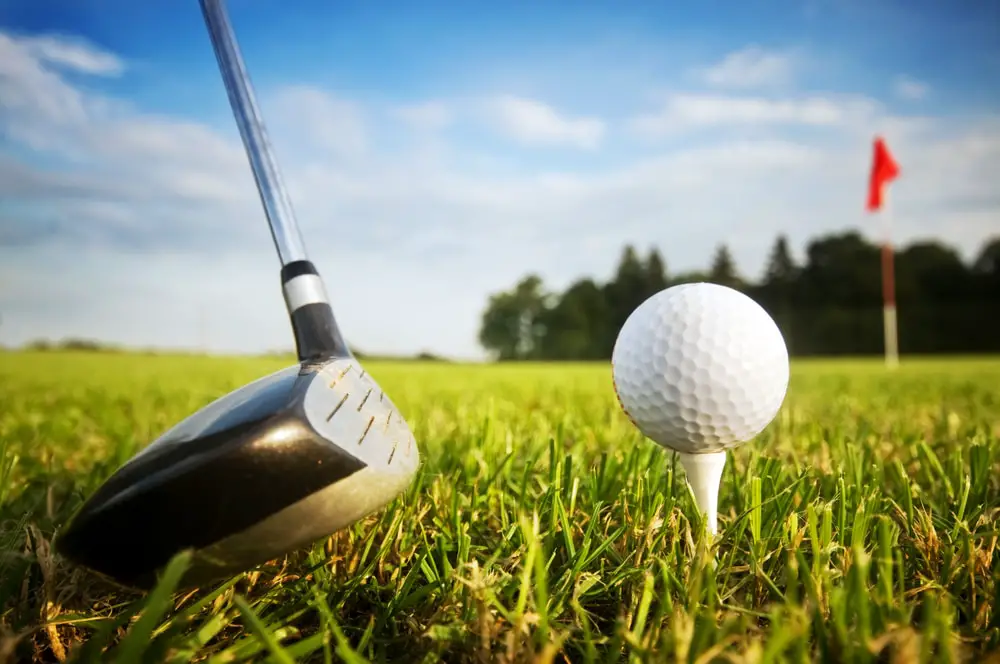Last Updated on October 23, 2023
Starting the downswing in golf is essential to achieving a successful shot. It requires patience, practice and technique, but once mastered can drastically improve your game. The key elements of starting the downswing correctly include proper grip and posture, weight transfer from back foot to front foot, hands and arms movement, as well as an effective follow through. Mastering these techniques will help you start the downswing with confidence so you can get that perfect swing every time.
Table of Contents:
- Grip and Posture
- Weight Transfer
- Hands and Arms
- Follow Through
- FAQs in Relation to How to Start the Downswing in Golf
- Conclusion
Grip and Posture
Grip and posture are two of the most important elements in golf. Having a good grip and posture will help you make a smooth, consistent swing that produces better results.
When gripping the club, it is important to hold it lightly but firmly with your fingers and not your palms. Make sure that the V formed by your thumb and index finger points towards your right shoulder (for right-handed players). This helps ensure that you have even pressure on both hands throughout the swing.
Posture is also key when starting downswing in golf. You want to stand tall with your feet slightly wider than shoulder-width apart, knees bent slightly, hips back and chest up. Your arms should hang naturally from your shoulders without any tension or strain in them; this allows for more freedom of movement during the swing motion. It’s also important to keep your head still throughout the entire motion so as not to disrupt balance or cause unnecessary strain on other parts of the body, such as neck muscles or lower back muscles, which can lead to injury over time if not addressed properly early on in one’s golfing career.
Weight Transfer
Weight transfer is an important part of the golf swing. It involves shifting your weight from back to front during the downswing, which helps generate power and accuracy.
The first step in proper weight transfer is to set up with a good grip and posture. Your feet should be shoulder-width apart, knees slightly bent, and arms relaxed but not too loose. This will help you maintain balance throughout the swing while allowing for maximum power generation when transferring your weight forward.
Next, focus on keeping your hands ahead of the clubhead at address position and during the backswing to create momentum when transferring your weight forward on the downswing. You want to feel like you are pushing off with your right foot (for right-handed players) or left foot (for left-handed players). This will help ensure that all of your energy goes into hitting through impact rather than trying to lift or scoop up the ball with your hands or arms.
When it comes time for impact, make sure that you have shifted most of your body weight onto your front foot while still maintaining some pressure on both feet so that they remain firmly planted on the ground throughout the follow-through and finish position. This will give you more control over where shots go, as well as provide stability after contact has been made with the ball.
Finally, remember to keep a steady head throughout this entire process; don’t let it move too much before or after impact. Keeping a steady head allows for better visual alignment, which leads to improved accuracy in shot direction and distance control overall – two key components of successful golfing.
Hands and Arms

Using your hands and arms correctly during the downswing is essential for better control over your shot. The most important part of this process is to ensure that you maintain a consistent grip on the club throughout the entire swing. It’s important to keep your left arm straight while keeping your right elbow close to your body as you move through the backswing. This will help create a more powerful downswing, allowing you to hit longer drives with greater accuracy.
When it comes time for impact, make sure that both arms are still in their original positions; if they have moved out of alignment, then adjust them accordingly before continuing with the rest of the swing. As you approach impact, focus on transferring weight from one side of your body to another; this will allow for more power and distance in each shot. Additionally, try not to tense up too much when making contact with the ball; instead, stay relaxed and let gravity do its job by pulling down on both arms as they come through at impact.
Follow Through
The follow through is the final step in your golf swing, and it’s essential to getting the most out of each shot. Properly executing a follow-through can help you hit longer, straighter shots with more accuracy.
After hitting down into the ground behind the ball, continue swinging up until the clubhead reaches its highest point above shoulder level before beginning the descent back towards the starting position again (this is known as “following through”). Doing so ensures that a proper release angle has been achieved, which allows for maximum power transfer between body and clubhead upon impact resulting in greater distances travelled by golf balls after being struck by a player’s driver or irons.
FAQs in Relation to How to Start the Downswing in Golf
How do you start a downswing easily?
The downswing is a crucial part of the golf swing, and it can be difficult to master. To start your downswing correctly, begin by shifting your weight onto your left side as you turn your hips and shoulders towards the target. As you do this, keep your arms in front of you and maintain a wide arc with the clubhead. Finally, move into an aggressive position with a full shoulder turn while keeping your head still throughout the motion. This will help ensure that all parts of the swing are connected for maximum power and accuracy. With practice, you’ll soon have a smooth and consistent downswing.
What part of the body starts the golf downswing?
The golf downswing is initiated by the lower body. Starting with a slight shift of weight to the left side, the hips and legs begin to rotate towards the target while maintaining flex in the knees. This creates torque in the core which then propels your arms and hands into action as they swing through impact. The entire motion should be fluid and continuous, allowing for maximum power transfer from your body to your clubhead at impact. With proper timing and technique, you can generate tremendous speed on every shot.
How do pro golfers start the downswing?
The downswing is the most important part of a golf swing, as it determines the power and accuracy of your shot. Pro golfers start their downswing by shifting their weight to their left side while rotating their hips and shoulders back in unison. This helps create torque in the body, which allows for maximum clubhead speed at impact. Additionally, they will also keep their head still throughout this motion so that they can maintain balance and control over the clubface. Finally, pro golfers will often use a “trigger” such as a waggle or some other movement to initiate the downswing sequence and ensure the proper timing of each move. With practice and dedication, anyone can learn how to master this critical part of the game.
What should trigger the downswing?
The downswing is triggered by the body’s natural sequence of movements, beginning with a shift in weight to the left side and followed by a rotation of the hips. This creates an increase in power and momentum that propels the club head through impact. The arms should remain passive during this process, allowing for maximum efficiency and accuracy when striking the ball. Additionally, timing is key; players must ensure they are accelerating into impact to generate maximum distance on their shots. With proper technique and practice, golfers can master this crucial element of their swing for consistent success on the course.
Conclusion
Golf is a game of precision and practice. With the right grip, posture, weight transfer, hands and arms motion, and follow-through, you can start your downswing with confidence. The key to success in golf lies in mastering the basics, like starting the downswing correctly. Take time to practice each step until it becomes second nature, and you’ll be ready to hit that perfect shot. So don’t forget: when it comes to starting the downswing in golf – get your grip right, keep your posture steady, shift your weight appropriately, move those hands and arms together as one unit, and then follow through for maximum power.


